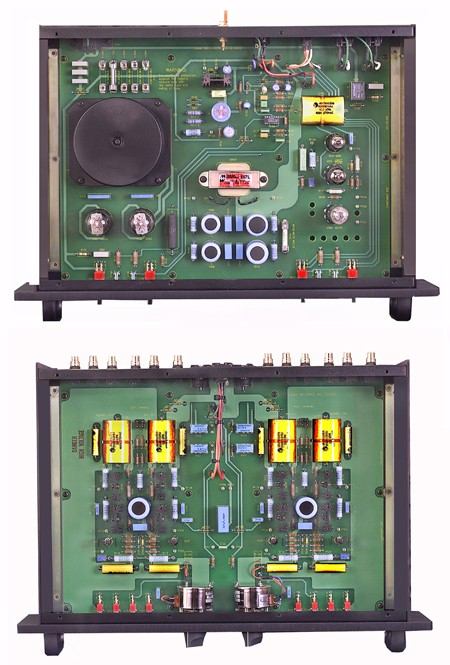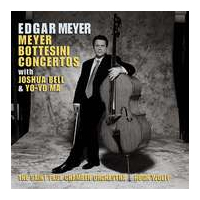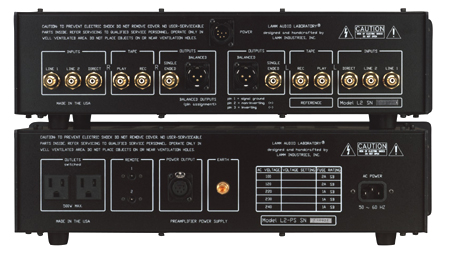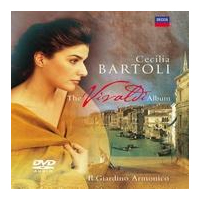You are reading the older HTML site
Positive Feedback ISSUE
16
november/december 2004
lamm industries
L2 Reference preamplifier
as reviewed by Marshall Nack

|
MARSHALL NACK'S SYSTEM
LOUDSPEAKERS
ELECTRONICS
SOURCE
CABLES
ACCESSORIES
|
The Truth and Nothing But
Reality checks in to the listening room occasionally. Lynn, my oboe-playing wife, had a couple of musician friends over to rehearse the Beethoven Trio Opus 87. Happily, intonation was good this particular night, and it was a thrill to be present, taking notes on my laptop. Two oboes and an English horn blowing away at a mere dozen feet produce some mighty high SPLs, let me tell you! My mind was abuzz at the time with some new ideas that had been fermenting ever since the Lamm gear arrived. Music through the L2 Reference Pre-Amp perplexed me, because it differed from the familiar sound I expect from audio gear, and I suspected it was more accurately replicating the genuine goods. I listened to the rehearsal with these thoughts in mind seeking and then, sure enough, finding, what I was looking for: the L2 was onto something.
Treble Integration
First impression might lead you to think the L2 could use more treble. Ah, but I'll venture to say longer acquaintance will change that notion, as it did for me. It's there alright, it's just that it's always commingled with lots of other frequencies above and below—these overtones are so closely interwoven that it's hard to find the point where the mid-band ends and the treble begins. I was listening for this during the rehearsal and, now that I've corroborated it, it's how I've been hearing treble ever since. Heck, even bass has this quality, with hooks across the frequency spectrum.
If you've ever been exposed to acoustic theory, this is not news. For example, here's an interesting tidbit from the liner notes of an old Bose demonstration LP of Mercury Living Presence recordings: "Studies have shown that the peak energy output of a cymbal is in the 8000-11000 hertz range. Surprisingly enough, it was also found there was significant energy as far down as 200-300 hertz." This was written by Bert Whyte, the Technical Director of Everest Records, one of the first labels to produce commercial stereo LPs. I never made the leap between theory and the sound room because I never heard this in reproduced sound before. And this explains why you may think the L2 could use more treble—one of the secondary effects of integration is the frequency extremes don't stand out as much. I'll go so far as to speculate the only time you hear "pure" treble in nature, that is, just a single frequency, is from a signal generator. This may take getting used to.
This leads right into Number Two: the issue of body and support. The L2 has plenty of body and support from its stellar integration. The fundamental, or main, frequency of the note is always coupled with a broad band of overtones. Every instrument on the stage has this support—nothing is left floating around, weightless. Otherwise there's no way they can have realistic body. (I'm focusing on the top end because this is most often the culprit area, but the principle applies across the board).
But let's talk about sound images for a minute. You won't be able to analyze the L2's sound by pulling apart its bass, midrange and treble components, because they are so finely woven into the fundamental. Instead, what you hear is a dense instrument sound with a defined, but soft edge. And the sound image is of consistent quality from the right edge, through the center, and out to the left. I mention this to contrast it with some classic tube pre-amps, which create a halo or acoustic aura around the instrument, which you can disentangle from the principal frequency. You hear the note in the center as well as a cloud of acoustic stuff surrounding it. The L2 is doing it right—it has no aura, its sound image is consistent throughout. By the way, this also gives the life-sized L2 images better shape.
Keep in mind the L2 is a hybrid—the control chassis is solid-state, and the power supply has five tubes. Does the L2 sound like tubes? Does it sound like solid-state? On balance, I think it leans towards solid-state in that it shares the best qualities of the Linn Klimax and the Gryphon Prelude, two of the best solid-state pre-amps I've auditioned. All three exhibit unhyped, accurate, neutral and grainless sound.
Many audiophiles get their rocks off when a new product gives them more treble "extension" or a more powerful bass. While the new object of affection can certainly shift the tonal balance one way or the other, be careful that what you're hearing isn't the result of detaching the frequency. The treble or bass will be more pronounced when it is detached from the overtone structure.
Simple Purity
My third observation is that the real thing is simpler than we are used to thinking of it. Audiophiles tend to be in awe of natural sound and view it as enormously complicated, maybe beyond our understanding. Yeah, when you look at the big picture, it is overwhelming. The only way to come to terms with it is by narrowing the scope. So, let's just hone in on frequency content for the moment.
Acousticians long ago were able to measure the frequency make-up of each instrument—that is, the characteristic frequencies excited when a violin sounds a high C, for example. There's the fundamental and a lot of specific overtone frequencies. Excepting bowing or scraping noises, that's it. Acoustic textbooks have maps of this sort of thing. This is what I mean by the simple purity of natural sound—it is known. The other thing is, it is devoid of any electro-mechanical component. As you bring in additional instruments, you pile on more maps. The audio component's job is to keep this harmonic capsule, this map, intact, and give full expression to the notes.

The L2 was carefully designed to respect the fragile nature of the signal. On the one hand, it protects the signal while en route through its circuits so it doesn't acquire artifacts (i.e., noise, grain, echoes, and frequency anomalies). And it does not intentionally pump up the sound by adding or exaggerating things like dynamics or frequency extremes, or by beautifying the musical line and deviating towards euphonics. Then, as discussed above, the L2 doesn't shortchange the harmonic capsule. What comes out is something approximating the acoustic map. It's easy to say, and it's often said, "With component XYZ, what goes in is what comes out, no more, no less." This is really appropriate for the L2—it respects the integrity of the signal.
Detail and Transients
Select either the "Double Concerto for Cello
and Double Bass," with Yo-Yo Ma, or the "Gran Duo Concertante," with Joshua
Bell's violin partnering Edgar Meyer's bass, both
 from
Meyer and Bottesini Concertos (Sony SK 60956). There are some very fine close
harmonies going on between the soloists in either case. Because the
tonalities and timbre of the stringed instruments are so similar (you'll
be amazed how Meyer can make his double bass sound like a cello or
violin), they tend to blend. While you can enjoy these compositions
uncritically, listening to them all blended together, as you might on a
table radio, as with anything else (here's that old refrain again),
closer study yields deeper appreciation. This means hearing deeper into
the score to find out what each soloist is contributing. If your system
can't resolve that, you're missing out on more than the subtleties—you're missing the main point. (I find this true for all genres except
Pop and soft jazz. With them, the deeper you hear into the piece, the
less interesting it gets. Yes, I know this sounds elitist, but isn't it
true?)
from
Meyer and Bottesini Concertos (Sony SK 60956). There are some very fine close
harmonies going on between the soloists in either case. Because the
tonalities and timbre of the stringed instruments are so similar (you'll
be amazed how Meyer can make his double bass sound like a cello or
violin), they tend to blend. While you can enjoy these compositions
uncritically, listening to them all blended together, as you might on a
table radio, as with anything else (here's that old refrain again),
closer study yields deeper appreciation. This means hearing deeper into
the score to find out what each soloist is contributing. If your system
can't resolve that, you're missing out on more than the subtleties—you're missing the main point. (I find this true for all genres except
Pop and soft jazz. With them, the deeper you hear into the piece, the
less interesting it gets. Yes, I know this sounds elitist, but isn't it
true?)
Situations like this pose no threat to the Lamm L2—they merely serve to showcase its composure. You'll not be left guessing about the scoring—the L2 is exemplary at disentangling this kind of thing. The soloists interact and pass melodies amongst themselves and you can follow the dialogue. You hear just what Edgar and Joshua are saying in their duet. The L2 manages this feat through resolution and truth of timbre.
Excellent image separation and detail resolution describe every little event. What's nice is these are not forced upon you—this detail is another thing entirely from the usual kind you hear in audiophile systems. THAT detail is bright, analytical and etched — it often suffers from lack of support and integration, and may highlight timing problems or unnatural image borders. I run from the room when I hear that. The other key ingredient is timbral accuracy—the double bass, even in the higher register, where it overlaps the cello, presents enough timbral cues to keep it distinct.
In the way everything is treated so even-handedly, the L2 bears a resemblance to passive pre-amps. The lure of the passive is their relaxed, unforced presentation while resolving a massive amount of detail across the breadth of a panoramic soundstage. The L2 gets the gold for the least sensational, or hi-fi, sounding active pre-amp ever to grace my system.
Staccato
It took me a while to recognize the L2s' speed. This was largely due to the naturalness of its transients. The wave front lands with temporal and frequency coherency—no laggards, no leading treble (which is often used to add extra definition). This unassuming attack calls less attention to itself, and therefore may sound less exciting and seem slower, similar to the L2's handling of treble. How the wave ends on the trailing side of the note is also interesting. The L2 images are large and dense, kind of taut, but when it's time for the note to end, this large sound object doesn't lumber around. It decays as quickly and as coherently as it began. This makes me think there's some degree of damping, which keeps the sound so taut and in check. The Lamm ML1.1 amps had a similar staccato quality, in contrast with my reference von Gaylord Audio gear, which could be characterized as legato. The von Gaylord holds onto sounds, it lets them linger, extending the trailing end. The decay component of the Lamm L2 is neither exaggerated nor shortchanged—the staccato is done tastefully and not abused.
 Occasionally I noticed an interesting
phenomenon in the area of dynamics and SPLs. On Dance of the Night
Creatures (Mapleshade MS 06032), featuring trombonist Thurman Green in
small group settings, the atmosphere re-created in my room was, let's
just say, persuasive. This is one of my all-time fave recordings,
highest marks for performance and sound. The dimensional soundstage is
mesmerizing, especially the battery of percussion that takes over the
far right corner. When Thurman moves front and center to do his thing on
"Passion Flower" (track 2), the trombone is able to pressurize the room
in the same way it happens in a jazz club or small hall when one of the
musicians comes forward to the mike for a solo. It gets really loud,
dynamic and big and you sort of feel it in a physical way. This happens
while the rest of the group stays where they were, in terms of position
on the stage and volume level. The L2 maintains instrument integrity at
any and all sound pressure levels.
Occasionally I noticed an interesting
phenomenon in the area of dynamics and SPLs. On Dance of the Night
Creatures (Mapleshade MS 06032), featuring trombonist Thurman Green in
small group settings, the atmosphere re-created in my room was, let's
just say, persuasive. This is one of my all-time fave recordings,
highest marks for performance and sound. The dimensional soundstage is
mesmerizing, especially the battery of percussion that takes over the
far right corner. When Thurman moves front and center to do his thing on
"Passion Flower" (track 2), the trombone is able to pressurize the room
in the same way it happens in a jazz club or small hall when one of the
musicians comes forward to the mike for a solo. It gets really loud,
dynamic and big and you sort of feel it in a physical way. This happens
while the rest of the group stays where they were, in terms of position
on the stage and volume level. The L2 maintains instrument integrity at
any and all sound pressure levels.
Texture and Sound Pixels
The L2 shares the ability to mimic the texture of real sound that I first heard with the Lamm ML1.1 amps. From my Lamm ML1.1 mono block review:
"On a deeper level, what my friend was talking about is a much more subtle, almost unnoticed kind of event. Most ears perceive the major events without any effort during an un-amplified concert. Close your eyes, focus your attention and soon you can discern smaller events within the major ones. Keep concentrating and you will probably resolve an even finer layer. This pattern repeats—there seems to be no end of discernable differences—until eventually you come to a level where apparently nothing is happening. This will be on long, evenly sustained notes. However, if you listen closely, you can still hear things, even on that level. Sustained sound is really like a finely woven cloth; it is never totally smooth and without texture. My friend and I decided to think of this substructure as "sound-pixels." In reproduced sound the base level of sound pixels is usually disguised by what audiophiles call grain, a byproduct of the process.
We typically think of solid-state gear as grainy, i.e. comprised of coarse particles you can actually hear, and that you know are an artifact. Likewise, we often say tube gear is fine-grained, or even grainless, that is, not evidencing discernable grain. My von Gaylord Audio tube amps have no apparent grain and reveal a smooth, undifferentiated surface. But neither type gives a hint of the textured base level—the sound pixels.
I'll be darned if I wasn't hearing some of that texture thing from the ML1.1s! Instead of smoothness on the one hand, or grain on the other, they don't have a discernable grain structure. With that limitation out of the way, their micro-resolving power (another new word for our lexicon) comes to the fore. They weave a very fine cloth and are the only gear I've heard that allows a peak at the little ‘sound-pixels.'"
Substitute L2 for ML1.1 in the above excerpt. Real events are comprised of layer upon layer of information packets, the "sound-pixels". The L2 reproduces more of these pixels. Other gear gets the main event, but either smoothes over or overlays the micro-texture.

Amp partnering
Now, after all the preceding copy about how well the L2 mimics aspects of the real thing, I'm gonna do a flip-flop. Sometimes I have the system tweaked in ways that deviate from what you hear in life, with a weightier tonal balance, more warmth, and some degree of euphonics. Such was the case when I paired the Lamm L2 with the Mastersound 845 SET mono-block amps. This produced the kind of sound that stops people in their tracks. Guys would stay put for entire LP sides, trying to figure out what made it tick. Yes, of course, it was warm, almost humid. It was not what could be termed neutral, but it was so darn involving and easy on the ear. Well-supported images, with plenty of lift and sparkle; well-developed, if warmish bass, that was fast enough to move the pace forward… t'was a big, beautiful sound that sucked you into its embrace. The macro dynamics would impress you: the micro dynamics of the SET midrange would seduce you. You can speculate as much as you like about neutrality and accuracy, but you'd have to be blind to deny the powerful effect it had on people.
The ML1.1 mono amps
You'd think a more accurate amp pairing would alter the equation, perhaps bring less involvement, right? Most of the time, yes. But when the L2 was paired with the ML1.1s, a level of realism resulted that was previously unheard and impressed on it's own terms. The lack of artifact, the purity, the control, and the sound-pixel thing is not something I'll forget anytime soon.
 This combination made for an unparalled,
un-hyped naturalism. Listen to Cecilia Bartoli on The Vivaldi Album
(London 289 466 569-2). On track 1, the lineup of instruments in the
center and depth of layering reminds me of what you sometimes hear on
old mono LPs. You have her voice, the vocal choir, a recorder and a
lute, all straight down the pipeline. Those instruments closer to you
are larger, the ones in the distance are smaller and weaker, far away.
Cecilia's voice is natural and articulate with no strain, like her
singing is a piece of cake, which is the impression you'd get if you
were in the audience. Swap out the L2 and the sure-fire control of her
forte passages goes along with it. The soundscape is less warm and
weighty than with the Mastersound 845 SET amps. Reverb trails are
definitely shorter. But it is ultra realistic.
This combination made for an unparalled,
un-hyped naturalism. Listen to Cecilia Bartoli on The Vivaldi Album
(London 289 466 569-2). On track 1, the lineup of instruments in the
center and depth of layering reminds me of what you sometimes hear on
old mono LPs. You have her voice, the vocal choir, a recorder and a
lute, all straight down the pipeline. Those instruments closer to you
are larger, the ones in the distance are smaller and weaker, far away.
Cecilia's voice is natural and articulate with no strain, like her
singing is a piece of cake, which is the impression you'd get if you
were in the audience. Swap out the L2 and the sure-fire control of her
forte passages goes along with it. The soundscape is less warm and
weighty than with the Mastersound 845 SET amps. Reverb trails are
definitely shorter. But it is ultra realistic.
Cosmetics
The L2 looks more like a laboratory test bench device than an interior decorator's idea of a home stereo appliance. Both of its chassis fairly bristle with raised hex screw heads, and lots of knobs and controls, giving it a kind of macho sex appeal. Functionality is the order of the day. There's no remote—flashback to the 1970's when dual mono stepped attenuators were the vogue, they're here, too. The attenuators and toggle switches have a solid, reliable action—not the silky smooth operation of some other luxe brands. The handles in front aren't really necessary as the units are physically lightweight. You get a nice ringing with the old knuckle-rap test. Nevertheless, the L2 sounds best when left unadorned—if possible, avoid putting weights or Shakti Stones on it. Playing with after market footers and platforms had benefits we'll get to shortly.
Low output means a high setting on the dual mono volume controls. This could be an issue with low sensitivity amps or low output front-ends, like the Zanden Audio Model 5000 DAC, which necessitated raising the volume to around 3 o'clock. The L2 Ref. topology represents a pure balanced design: however, running balanced cable between pre-amp and amp didn't change the volume setting or the sound quality.
The power supply has five tubes and does get warm, so provide adequate ventilation. The manufacturer recommends leaving the L2 on all the time—this way there's less wear and tear than the thermal shock when going from cold to the warm ready state.
Wires and Tweaks
The L2 really loved having both chassis on the Solid Tech Rack Of Silence—almost everything performs better on the ROS. However, this wasn't practical due to my rack placement and configuration. Next best was placing the control unit on the Polycrystal rack on Combak RFS-66 tuning feet and the power supply on the ROS. I tried a Walker Audio Tuning Disc on top of both the power supply and the control chassis with mixed results. The Discs focus the sound, add more dynamic range and enhance the frequency extremes. This is good, unless what you want is more mid-range.
The Shunyata Hydra linked by a Golden Sound Red power cord to one of the unconditioned outlets on the Furutech e-TP80 power strip did the trick most of the time. The e-TP80s unconditioned outlets sound fine and offer another degree of noise reduction.
All my reference interconnects worked well, including Harmonic Tech, Argent Pursang-S, Harmonix, Stealth and von Gaylord Audio. Likewise for the Argent Audio Brujo Power Cord.
Conclusion
I dreamed I went to heaven and found myself listening to a Lamm L2 Reference pre-amp, Lamm ML.1.1 mono-blocks and the Kharma CRM 3.2 speakers. Then I woke up and realized it was just another couch-potato evening in my bourgeois living room. Such is the stressful situation yours truly finds his self in for this review.
I enjoyed a wide range of source material through the Lamm L2, not just a carefully selected audiophile diet. Especially when paired with the ML1.1 monoblocks, you can play anything. The L2 reminded me of good passive pre-amps: straightforward, unhyped, and closer to the truth. Vladimir Lamm has deciphered some of the elusive aspects of natural sound and managed to engineer them into his designs.
After I packed up the Lamm gear and re-assembled my rig I felt acute withdrawal. Yes, my reference system sounds musical and engaging, but it does not compare in terms of clarity, accuracy, texture, timbre or dynamics with the Lamm combo. My checkbook was the determining factor. Ah, well, it's a good thing auditory memory is short lived.
Serial Number: F10062
L2 Reference preamplifier
Retail: $14,790
Lamm Industries, Inc
2621 East 24th Street
Brooklyn, NY 11235
TEL: 718. 368. 0181
email address: [email protected]
web address:
www.lammindustries.com
